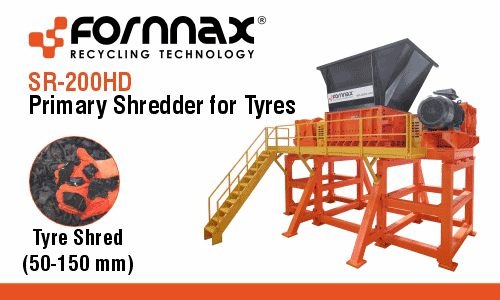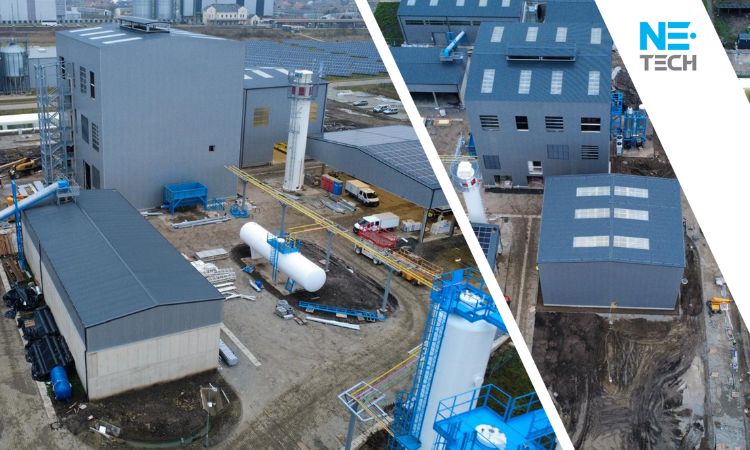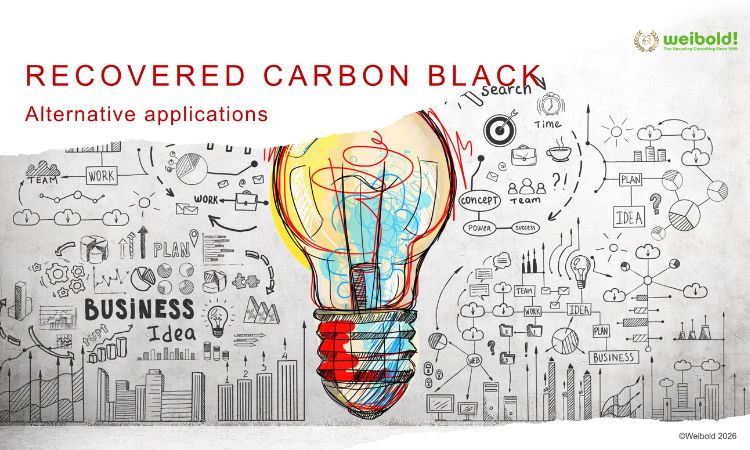Weibold Academy: Need for concerted R&D in tire recycling and pyrolysis
Month by month, our Weibold Academy series touches upon different topics in the world of tire recycling and pyrolysis and highlights different sides of running this business. This month, we are focusing on the need of R&D in the tire recycling and pyrolysis industry.
Research and development in tire recycling and pyrolysis
By their nature, tire recycling and pyrolysis are capital-intensive businesses which require rather big investments to lay a foundation for successful production. The industry is constantly changing. Existing markets are under threat, other markets emerge. The role of standards organizations and industry associations is taking on an increasingly important role for facilitating investments into new markets for products derived from the major output materials - recycled rubber granulates (crumb rubber), pyrolytic fuel oil and recovered carbon black (rCB).
For example, Tyre Stewardship Australia (TSA) funds the development of rubber powder and plastic composites for injection molding, reinforced crumb rubber concrete. They test the benefits of crumb rubber asphalt over expansive clay soils, develop equine porous pavement systems, and build high-performance wall system using baled end-of-life tires, etc.
To make more breakthroughs possible and fuel needed innovation, the industry around the world is called on to intensify their partnerships with independent industry experts, testing institutes and universities. The industry will directly benefit from a fast-paced technology and product development to substitute more and more virgin materials and create more and higher value markets in a circular economy.
Examples of latest research on tire-derived products
Research communities and scientific journals abound with studies on recycled tire-derived materials and their use into civil engineering products. Up-to-date articles on the topics at ScienceDirect – prominent Elsevier’s publication platform for scientific researches – include:
- Recycling of waste tire fibers into advanced aerogels for thermal insulation and sound absorption applications by Quoc Ba Thai, Ren Ooi Chong, Phuc T. T. Nguyen, Duyen K. Le, Hai M. Duong (link)
- Behavior analysis of concrete with recycled tire rubber as aggregate using 3D-digital image correlation by Fethi Abbassi and Furqan Ahmad (link)
- Improvement of waste tyre recycling technology based on new tyre markings by Dan Dobrotă, Gabriela Dobrotă, Tiberiu Dobrescu (link)
- Effects of crumb rubber on the frost resistance of cement-soil by Fengchi Wang, Xiaowei Ping, Jinghai Zhou and Tianbei Kang (link)
- Suitability of devulcanized crumb rubber for oil spills remediation by Vjaceslavs Lapkovskis, Viktors Mironovs and Dmitri Goljandin (link)
- Experimental study on mechanical and waterproof performance of lightweight foamed concrete mixed with crumb rubber by Rong Wang, Peiwei Gao, Minghao Tian and Yuchen Dai (link)
- Production and droplet combustion characteristics of waste tire pyrolysis oil by Álvaro Muelas, María Soledad Callén, Ramón Murillo and Javier Ballester (link)
- Fractionation of tire pyrolysis oil into a light fuel fraction by steam distillation by steam distillation by Guilherme Anchieta Costa and Ronaldo Gonçalves dos Santos (link)
- Waste tire pyrolysis using thermal solar energy: An integrated approach by Joseph Zeaiter, Fouad Azizi, Mohammad Lameh, Dia Milani, Hamza Y. Ismail and Ali Abbas (link)
- Carbon black recovery from waste tire pyrolysis by demineralization: Production and application in rubber compounding by Juan Daniel Martínez, Natalia Cardona-Uribe, Ramón Murillo, Tomás García and José Manuel López, etc. (link)
The need for ongoing research remains an ongoing issue in tire recycling and pyrolysis. Making concerted efforts, operators, associations, R&D Institutions, universities and researchers will achieve remarkable goals. If you run a tire recycling or pyrolysis business, consider supporting young researchers and collaborating with universities to contribute to the industry’s success. This industry is truly remarkable and full of opportunities!
How Weibold can help
Weibold has been carrying out market research, pre-feasibility studies, bankable business plans for many years since 1999. To learn more about up-to-date commercial technologies in tire recycling and pyrolysis write us at sales@weibold.com. We have been helping building successful tire recycling and pyrolysis businesses since 1999. Among others, our services include:
Weibold is an international consulting company specializing exclusively in end-of-life tire recycling and pyrolysis. Since 1999, we have helped companies grow and build profitable businesses.









